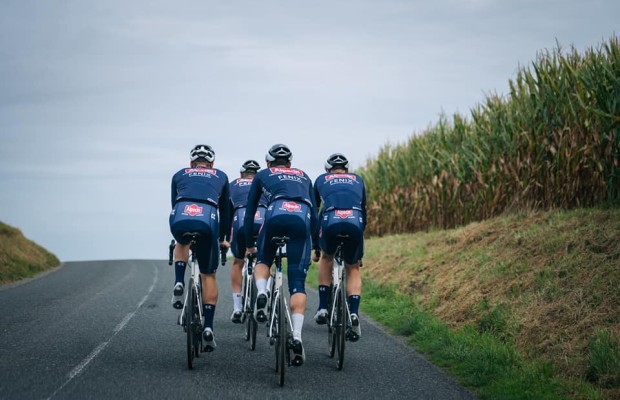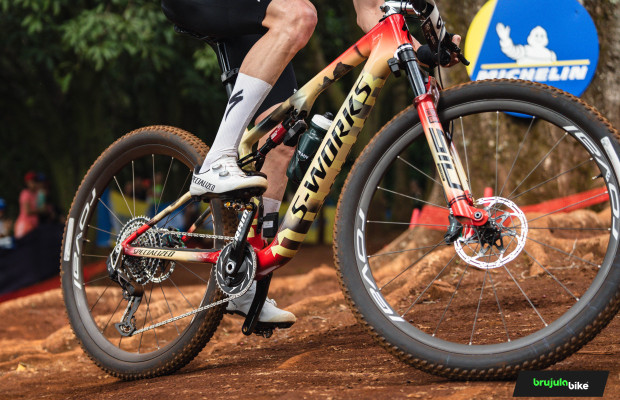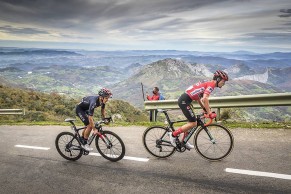What differentiates a professional road bike from yours?
The best cyclists need the best bicycles. The teams and sponsors that supply the parts are in a constant race to squeeze the regulations and thus improve the performance of their riders. Brands make models almost identical to these available to fans, but where are the differences between them?

Professional and amateur bicycles: similar but not the same
Amateurs have a huge range of bicycles available to them, although money often stands between the dream of having a bike like the professionals and reality. Still, there are always those who have the budget to buy one of these pearls of technology and pedal with the same weapon that the best cyclists use to compete for the most prestigious races or to wear the most coveted jerseys.
However, despite the obvious resemblance, there are some differences.
RECOMENDADO

The cyclist's patience: how long, gentle training sessions build your best season

Tips for cycling in the rain

25 cycling gifts ideas to get it right

When do helmets have to be changed? Do they have an expiration date?

Some reasons to stay away from the road in winter

S-Works: what does it really mean and where does Specialized's most exclusive label come from?
Firstly, the handlebar and stem measurements make the professional cyclist adopt a position that few amateurs could endure. The bikes of professionals are therefore narrower and lower. Specifically, handlebars usually range from 350-360 millimeters; that is, the minimum allowed by the UCI, contrasting with the 400-440 millimeters of most road bikes found in stores.
In addition to this, there is a huge stem; we are talking about between 30%-50% longer, ranging from 130-150 millimeters, compared to the 100 millimeters of many standard bikes.
The long stems are due to the fact that many cyclists ride relatively small bikes for them. The result is an efficient position in terms of aerodynamics and performance, but it requires the cyclist to get used to competing in a more uncomfortable posture.

Secondly, the bikes are much more carefully maintained and clean. Even if we keep up with maintenance and pamper them like no one else, it is impossible to match the level of the teams, which have top professionals who systematically evaluate and adjust, change, or repair any defects.
It is logical, as teams pour all their efforts into winning and achieving their goals. Just as they try to assemble the best possible team, pre- and post-race work is equally important.
Thirdly, the cycling elite is a testing ground for brands, who test their products with testers who push each component to the limit. No one better than the cyclists themselves to squeeze out every piece of the bike for long days and at wild watts. So they are also the first to taste the advancements that eventually reach amateur bikes.

However, not everything is a disadvantage for the amateur. Some differences can be a plus even when compared to professionals. Firstly, weight. Although current trends - such as disc brakes or internal wiring - add grams to our rides, top-of-the-line bikes mark a similar weight on the scale to their competition siblings, sometimes even lower.
Teams increasingly prioritize aerodynamics and decide to mount frames that cut through the air better even if they are slightly heavier, except in climbing stages. Therefore, sometimes they are 'far' from the UCI's 6.8-kilogram rule and face some stages with bikes weighing around 7.5-8 kilograms.
Despite this, it is true that teams often have to add extra weight to their bikes to comply with the rule, so it is normal to think that if the UCI finally lowers this limit, bikes will do the same.
Finally, amateurs are 'only' restricted by budget. The truth is that we can choose the wheels, frame, tires, or clothing we want to fine-tune our bike to our liking, choosing what we prefer and rejecting options that don't fully please us.
This is impossible for professionals, who, even though they have top-of-the-line components and bikes, cannot mount products from the competition, but must adapt to what the team provides.